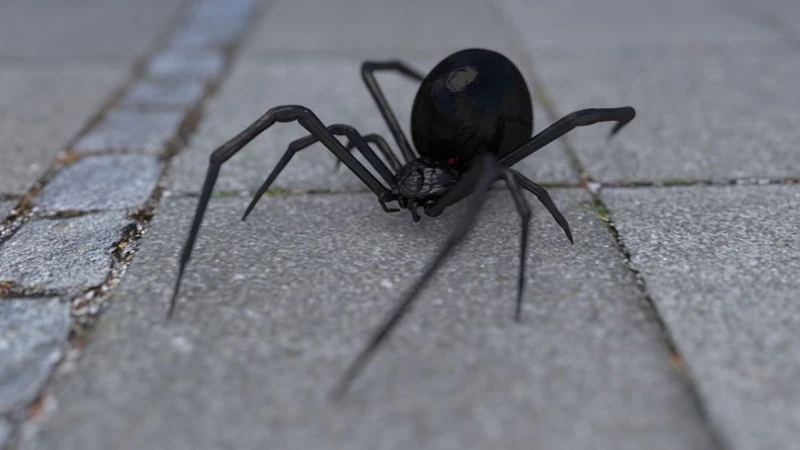The Basics of Black Widow Spiders
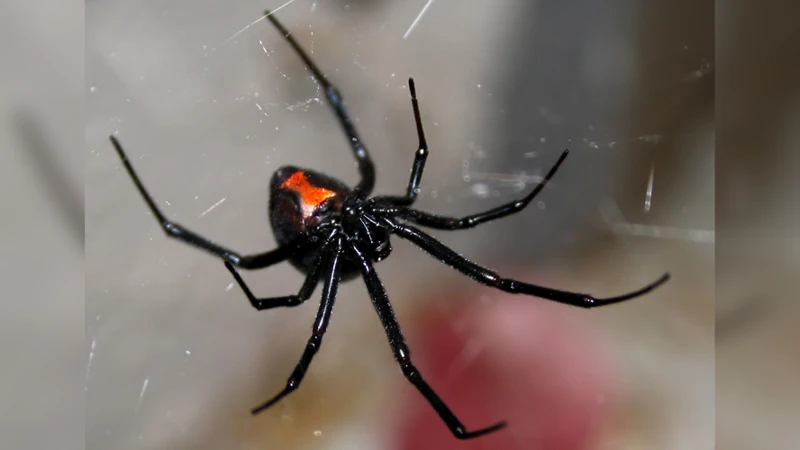
Black Widow spiders are one of the most well-known spiders due to their distinctive black color and red hourglass marking on their abdomen. They are often found in warmer regions and have a venomous bite that can be harmful to humans. These spiders are nocturnal and can usually be found in debris, woodpiles, and other dark areas.
The typical habitat of the Black Widow spider is in dry places with little moisture. However, the specific habitat selection may vary from one species to another. They are often found in protected areas where they can create webs without disruptions. Black widow spiders tend to select habitats based on several factors such as the availability of shelter, light, structural complexity, and humidity.
The Black Widow spider is one of the best examples of a species that known to extensively use habitat selection as a key survival strategy. Their behavior, reproductive pattern and even their growth and survival prospects may depend on the type of habitat they have chosen. The ecological niche of Black Widow spiders can limit their distribution and abundance in a given region.
Understanding Black Widow spiders’ habitat selection, including the role of abiotic factors such as light and moisture, is crucial in developing effective pest control strategies. It can also contribute to the knowledge and conservation of these species as they are an important part of the ecosystem.
An Overview of Habitat Selection
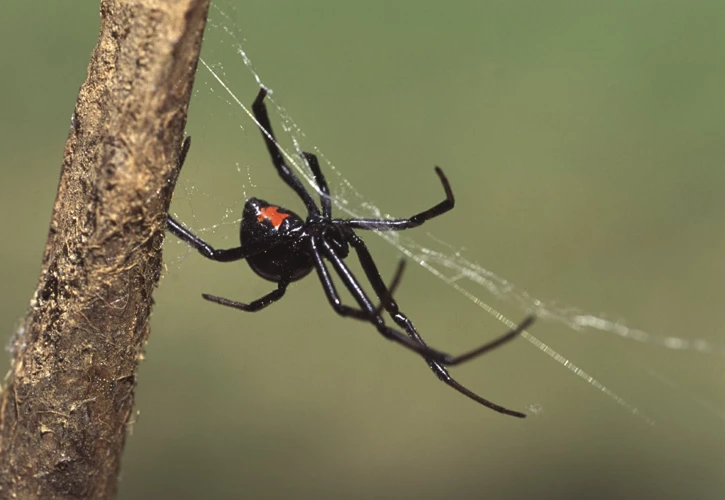
Black widow spiders are found all over the world, and they are well-known for their venomous bites. These spiders are mostly found in warm, dry areas, but they can also be found in damp and humid regions. Black widows are capable of adapting to a wide range of habitats, regardless of their geographic location. Habitat selection is an essential factor in the survival and reproduction of black widow spiders.
Ecological Niche
Ecological niche is defined as the role a species plays in its environment. It includes the physical, chemical, and biological factors that affect its existence. For black widow spiders, their ecological niche includes the availability of prey, the degree of shade, the presence of moisture, temperature, and humidity.
Abiotic factors
Abiotic factors are physical factors that affect the survival of black widow spiders. These factors include temperature, humidity, moisture, and light. Black widows thrive in habitats with high temperatures and low humidity. However, they can also survive in colder regions where humidity is high. Light is not a primary factor in habitat selection, but it can influence the behavior of black widow spiders.
Structural Complexity
Structural complexity refers to the physical structure of the habitat. It includes the degree of shelter, the amount of vegetation and rocks, and the presence of other animals. Black widows prefer habitats with many shelters like crevices, tall grasses, and rocks. These provide adequate hiding places as well as a food source for the spiders. The more complex the habitat, the better it will be for the black widow spiders.
Importance of Humidity
Humidity is the measure of water vapor in the air. Black widow spiders thrive in habitats with low humidity. However, the presence of moisture is also essential for their survival since they need water to survive. The ideal moisture levels for black widow spiders are between 50-70%. These levels allow the spiders to survive without drying out.
Impact of Human Activities
Human activities have a significant impact on black widow spider habitats. Urbanization and agricultural activities lead to habitat destruction, which can destroy spider habitats. Human activities also lead to the introduction of new predators and competitors, which can reduce the survival of black widow spiders. As a result, black widow habitats are mostly found in natural areas, away from human activities.
Habitat selection is an essential factor in the survival and reproduction of black widow spiders. Ecological niche, abiotic factors, structural complexity, humidity, and the impact of human activities are all important in determining the ideal habitat for black widow spiders. Understanding these factors can help with the management and conservation of black widow habitats. For more information on black widow spider habitats, visit our page on /black-widow-habitats/.
What is Moisture?
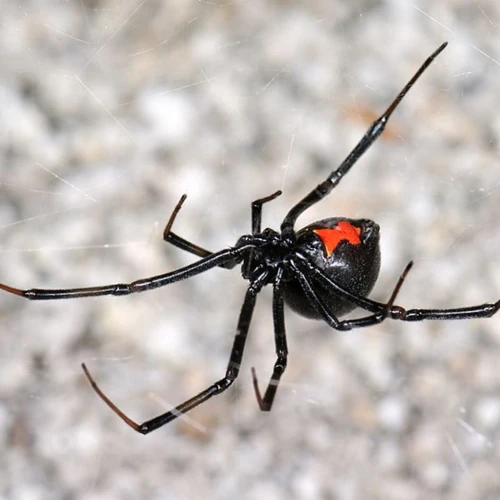
Moisture is an essential component of habitat selection for several species, including the notorious black widow spider. It refers to the dampness or wetness present in an environment, usually expressed through the amount of water vapor in the air or the degree of saturation in the soil. The moisture levels within a habitat impact ecosystem functioning by controlling certain biological, chemical, and physical processes. Considering that black widows prefer specific ecological conditions, understanding the role of moisture in their habitat selection can give us insight into their behavior, reproductive success, and population distribution (source).
The Role of Moisture in Creating Habitats
Moisture is a crucial factor in creating habitats for black widow spiders, and it greatly influences their distribution and abundance. The spider’s habitats must have the right amount of moisture to provide the ideal conditions for web-building and other essential activities. Moisture plays a role in creating the optimal temperature, humidity, and water availability required by these arachnids.
Moisture can come from various sources such as rain, dew, humidity, and water bodies. Different substrates have different moisture retention capacities, affecting the amount of moisture available for the black widow spiders. For example, soil tends to retain more moisture than rocks, and organic matter holds water better than sand. Black widow spiders, therefore, tend to have a preference for substrates that retain moisture better.
Black widow spiders’ habitats range from natural to human-made environments such as urban areas, forests, and deserts. In natural environments, such as forests, black widow spiders prefer areas near or around water bodies due to the moist soil and air. The level of moisture in these areas is high, creating the ideal environment for the spiders to thrive.
Urban areas provide different moisture conditions for black widow spiders compared to natural environments. Concrete surfaces tend to absorb less moisture, which can lead to drier conditions. However, urban areas have other moisture sources such as leaking pipes, drainage systems, and sprinklers. These provide artificial moisture sources, which can create an ideal environment for black widow spiders to live in.
The amount of moisture available in a black widow spider’s habitat is essential for their survival and ability to reproduce. Spiders need to build webs in moist environments, as dry webs are more brittle and less effective in catching prey. Moisture also affects the availability of food for the spiders. High humidity levels in the environment can support the growth of insects, which black widow spiders can prey on.
The role of moisture in creating habitats for black widow spiders is critical and cannot be ignored. The spiders have evolved according to various factors in their environment, with moisture being one of the most crucial factors for their survival and distribution. Understanding how moisture affects black widow spiders’ habitat selection can help in the management and control of these spiders as pests.
Urban and rural areas have different moisture conditions for black widow spiders.
The Ideal Moisture Levels for Black Widow Spiders
Black widow spiders are known to thrive in environments where the moisture level is just right- not too dry or too wet. They are most commonly found in areas where there is a relative humidity of 70-80%. The ideal moisture level for black widow spiders varies depending on the type of habitat they are in.
According to research, black widow spiders prefer areas where the soil is moist and there is adequate shelter to protect them from harsh weather conditions. In such areas, the spiders rely on the moisture present in the soil to create their habitats. The presence of moisture in the soil helps in regulating temperature which is critical for their survival.
There are four types of habitats in which black widow spiders are commonly found: forested areas, rocky terrain, riparian areas, and human-made structures. Each of these habitats has different moisture requirements for black widow spiders.
| Habitat Type | Ideal Moisture Levels |
|---|---|
| Forested areas | Soil moisture: around 60-70% Air moisture: Around 70-80% relative humidity |
| Rocky terrain | Soil moisture: around 40-50% Air moisture: Around 60-70% relative humidity |
| Riparian areas | Soil moisture: around 70-80% Air moisture: Around 80% relative humidity |
| Human-made structures | Moisture: around 70-80% relative humidity |
In general, black widow spiders tend to prefer environments with moderate to high humidity levels. The moisture content affects the availability of their prey as insects and other small animals thrive in environments with high humidity levels.
Maintaining the right moisture level is important for creating an ideal environment for black widow spiders. While controlling moisture levels may be challenging in outdoor habitats, homeowners can take steps to reduce moisture in and around their homes to deter black widow spiders from taking up residence. For example, fixing leaky pipes and gutters and using dehumidifiers can help in regulating moisture levels and deterring pests.
Internal link: To learn more about the structural complexity of black widow spiders’ habitat, click here.
Impact on Behavior and Reproduction
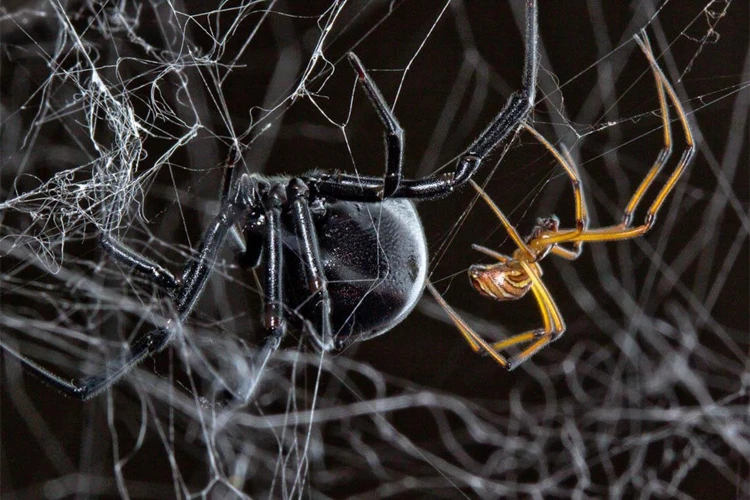
The behavior and reproduction of black widow spiders are closely influenced by their habitat and environmental conditions. This includes factors such as temperature, light, and most importantly, moisture. Understanding the impact of moisture on black widow spiders can provide valuable insights for pest control professionals and anyone looking to avoid encounters with these venomous arachnids. In this section, we will explore how moisture affects the behavior and reproduction of black widow spiders, and what ideal conditions they require for optimal survival. We will also discuss how controlling moisture levels can help to mitigate the risk of black widow spider infestation in your home or property.
How Moisture Affects Mate Selection
Black widow spiders not only rely on moisture for creating their habitat, but it also plays a crucial role in their mate selection process. Male black widows’ mate choice is heavily influenced by the moisture level in the female’s habitat. Studies have shown that males are more attracted to females who inhabit wet or humid environments.
Why is this the case? Moist habitats often have high amounts of prey, which provide a plentiful food source for females. In turn, females are able to grow larger and produce more eggs, making them more attractive to potential mates.
But the relationship between moisture and mate selection is not always straightforward. In some cases, males may also be attracted to females in drier habitats if there are other resources available that may increase the chances of successful reproduction.
This complex interplay between moisture level and mate selection highlights the importance of understanding the nuanced workings of ecosystems. Effective pest control for black widow spiders must take into account the ecological niche of these creatures, including their complex interactions with abiotic factors like moisture.
To ensure successful pest control, it may be necessary to control the moisture level of habitats in areas where black widows are present. This could include proper ventilation and drainage of shaded areas, using dehumidifiers, or other methods to reduce humidity levels.
Interestingly, other abiotic factors may also play a role in black widow spider populations, such as light and human activities. For example, artificial lighting can attract prey, which may in turn attract spiders to certain areas. Additionally, human activities like construction and landscaping can disrupt spider habitats, leading to changes in population dynamics.
By taking into account these varied factors and their interactions, pest control professionals can better understand and address the challenges posed by black widow spiders in various ecosystems.
Learn more about the abiotic factors that impact black widow spider habitats.
The Importance of Moisture for Egg Laying
Moisture plays a critical role in the survival and reproductive success of black widow spiders. Female black widows prefer to lay their eggs in damp, dark areas that shield their young from predators and unfavorable environmental conditions. The ideal location for nesting is a sheltered area where moisture is readily available, such as under rocks, decaying plant debris, or tree bark.
Without sufficient moisture, the egg sacs of black widows may dry out and become prone to fungal or bacterial infections, which can lead to the death of the eggs or hatchlings. Maintaining adequate moisture levels in their habitat is essential for the successful development and survival of black widow spiders.
One way humans can impact the moisture of black widow spider habitats is through landscaping practices. For example, overwatering a lawn or garden can create moist environments that are suitable for black widow spiders to thrive, while under-watered areas can lead to dry, unsuitable conditions.
It is important to note that while moisture is a critical factor for black widow spider survival and reproduction, it is just one aspect of their ecological niche. Other factors such as light, temperature, and prey availability also play a role in determining the suitability of a habitat for black widow spiders.
Maintaining adequate moisture levels in the habitats of black widow spiders is essential for their survival and reproductive success. By taking care to control moisture levels in areas where black widows are known to nest, we can help minimize the risk of encounters with these potentially dangerous spiders.
How to Control Moisture for Pest Control
One of the best ways to control the population of black widow spiders in your area is to control the moisture in and around your home. This is because they thrive in habitats that have high moisture levels, and by eliminating this, you can reduce the chances of them nesting in your home. Some effective ways to control moisture include fixing any leaky pipes or faucets immediately. If you have a basement or crawl space, consider using a dehumidifier to reduce the overall humidity level. Alternatively, you can regularly use a fan to ventilate the space and reduce moisture levels.
Another effective way to control moisture is to limit the number of plants around your home. While plants can add a lot of beauty to your home, they can also lead to high humidity levels, which black widow spiders love. Ensure that you do not overwater plants and trim them regularly to control the humidity levels. Additionally, ensure that your gutters are clean and free from debris to avoid water pooling and stagnation, which can lead to high moisture levels.
Controlling moisture is a crucial component of any effective pest control strategy. By reducing moisture levels, you can make your home less appealing to black widow spiders, reducing the risk of an infestation. Keep in mind that these spiders can still find shelter in other areas of your home, so it’s essential to seal any potential entry points and keep your home tidy. By doing so, you can significantly reduce the potential for black widow spiders to invade your space.
Maintaining low humidity levels in and around your home is a critical factor in controlling the population of black widow spiders. By following these simple tips, you can significantly reduce the risk of an infestation, creating a safer, more comfortable living environment for you and your family.
Conclusion
Summing Up
In conclusion, it’s clear that black widow spiders have developed a unique and specific habitat selection strategy. This is based primarily on moisture, which plays a critical role in creating the ideal environment for these spiders to thrive. From their ideal humidity levels to the ways in which moisture impacts their behavior and reproduction, everything revolves around this key factor. As such, it’s important to fully understand how moisture affects black widow spiders, particularly in terms of pest control.
By controlling moisture levels in and around the home, you can significantly reduce the risk of black widow infestations. This means inspecting and repairing any leaks or areas of excess moisture, using dehumidifiers and ventilation to regulate indoor humidity, and taking steps to prevent moisture build-up in potential shelters such as woodpiles or cluttered areas. While it’s not always possible to completely eliminate black widow spiders from your environment, these steps can help keep numbers under control and prevent potentially harmful encounters.
If you want to learn more about black widow spiders and their ecological niche within their environment, check out our article on the ecological niche of black widow spiders. Alternatively, take a look at our piece on the impact of light on black widow spiders, or discover how human activities can have an impact on black widow habitats in our article on the 16 human activities that can impact black widow spiders’ habitats. Whether you’re a spider enthusiast or just curious about these fascinating creatures, we hope this article has provided some valuable insights into their behavior, habits, and selection of habitat.
Frequently Asked Questions
What is the lifespan of a black widow spider?
A female black widow spider can live up to 3 years in the wild, while males usually only live for a few months.
What is the venom of a black widow spider used for?
The venom of a black widow spider is used to kill their prey and as a defense mechanism. It can also be harmful to humans.
What should I do if I am bitten by a black widow spider?
Seek medical attention immediately. Black widow bites can cause severe pain and muscle spasms.
Where can black widow spiders be found?
Black widows are commonly found in warm, dry climates throughout the world, including in the United States, Mexico, and Australia.
What do black widow spiders eat?
Black widows primarily feed on insects, including flies, mosquitoes, and grasshoppers.
Do all black widow spiders have the same markings?
No, the markings on black widows can vary depending on the species and location.
Can black widow spiders survive without moisture?
No, black widow spiders need a certain amount of moisture to survive and reproduce. Lack of moisture can also prevent prey from being available in their habitat.
Are black widow spiders aggressive towards humans?
No, black widow spiders are not typically aggressive towards humans and will usually only bite if they feel threatened.
What is the best method for pest control against black widow spiders?
Prevention is key. Keep your home and yard clean and free of clutter. Sealing cracks and openings around doors and windows can also help prevent spiders from entering your home. If you do have an infestation, contact a pest control professional for safe and effective removal.
Can black widow spiders be kept as pets?
While it is technically possible to keep black widow spiders as pets, it is not recommended due to their potentially dangerous venom and their aggressive behavior towards other animals.

